3×3 Eyes (manga)
3×3 Eyes (pronounced Sazan Aizu (サザンアイズ) in Japanese) is a Japanese manga series written and illustrated by Yuzo Takada. It was serialized in Kodansha‘s seinen manga magazines Young Magazine Kaizokuban and Weekly Young Magazine from 1987 to 2002, spanning to a total of 40 volumes. The English language translation was published by Dark Horse Comics, but was discontinued after the release of volume 8 in 2004.
Two Original Video Animation (OVA) series based on 3×3 Eyes were released in 1991 and 1995 and cover the storyline up to volume 5 of the manga. The first consists of four episodes averaging to half-hour of runtime and the second consists of three averaging out to 45 minutes of runtime. In the United States, the first OVA was originally distributed by Streamline Pictures and the second was distributed by Manga Entertainment shortly after the Japanese releases. The two OVAs were re-released in 2001 by Pioneer Entertainment in a collected set. There are also several 3×3 Eyes companion books, drama CDs, and video games, only released in Japan.
In 1993, 3×3 Eyes won the Kodansha Manga Award for the shōnen category.
Plot
3×3 Eyes follows the adventures of Pai, the last remaining Sanjiyan Unkara (三只眼 吽迦羅, three-eyed mandala), and her new Wu (Chinese reading of 无; an immortal companion), Yakumo, as they desperately try to find a way to make Pai human so that she can forget her troubled past. Pai travelled to Tokyo searching for the artifact, but shortly after she arrived, a thief snatched her backpack and cane from her. A teenage lad, Yakumo, tackled the crook and managed to get the pack back for her, though the thief escaped with the cane. Yakumo took her to his work, where Pai was able to get cleaned up, and where she discovered that he was the son of Professor Fujii, an archaeologist she had met in Tibet four years prior. The Professor had been researching the legends of the Sanjiyans and had befriended her and offered to help her find the Ningen, only to fall ill and die. Pai had his last letter to his son in her backpack, which asked Yakumo to help Pai with her quest. Although he didn’t believe his father’s tales of Pai being a monster, he agreed to assist her.
Their discussion was interrupted by news reports of a giant monster flying over the city. Pai recognised the creature as her pet Takuhi, who must have been released from his home in Pai’s cane by the thief, and who was now looking for her. Pai set out to retrieve him, with Yakumo close behind. However when Yakumo saw Takuhi fly towards Pai, the lad mistook the beast’s welcome for an attack, and shoved Pai out the way; immediately Takuhi ripped into the lad, fatally wounding him. Unwilling to lose the boy she had been hunting for and just located, Pai’s third eye opened, and she absorbed his soul. This restored his body, but tied him to her as her undead servant. Linked to her, he can only become human again when she becomes human. In the way of this goal are hordes of monsters and demons from the Shadow World, some desiring Pai’s powers, others who seek the Ningen for their own. Yakumo can again become mortal and end his constant need to protect Pai because if Pai dies, then so will he. Along the way, they encounter many followers of the now-dead demon god Kaiyanwang, all of whom wish to kill Pai or siphon off her power in order to resurrect their deity and/or gain immortality.
Media
Manga
3×3 Eyes is written and illustrated by Yuzo Takada. It was first published for five chapters in Kodansha‘s Young Magazine Kaizokuban from December 14, 1987 to April 10, 1989, and later serialized in Weekly Young Magazine from 1989 to 2002. Kodansha collected its chapters in forty tankōbon volumes, released from October 17, 1988, to November 6, 2002. A limited edition of the final volume was released on the same day of the normal edition containing a video game for PC. Kodansha also released four special edition volumes. The first two were released on April 25, 2002. An additional box set was also released on the same day. The remaining two limited edition volumes were released on May 23, 2002. The manga was re-released into 24 volumes from August 12, 2009, to July 9, 2010. A limited edition of the final 24th volume was released on the same day as the normal edition containing a commemorative art book.
The English-language translation was originally published by Studio Proteus by Innovation Comics in 1991 (resulting in a five-issue miniseries), but in 1995 was published from the beginning by Dark Horse Comics after they purchased Studio Proteus, as well as serialized in Super Manga Blast! magazine. This release altered art to remove several instances of a “penis-like tentacle” emerging from a character’s mouth in volume 2, this censorship was done with the approval of Yuzo Takada. A total of eight volumes were published between March 1, 1995, and May 5, 2004. The manga was discontinued in 2005 before the release of the ninth volume.
Sequels
A manga sequel, titled 3×3 Eyes: Genjū no Mori no Sōnansha (3×3EYES 幻獣の森の遭難者), began on Young Magazine Kaizokuban manga website (later renamed e Young Magazine in 2015) on December 26, 2014. The manga finished in August 2016 and was compiled into four volumes.
A second manga sequel, titled 3×3 Eyes: Kiseki no Yami no Keiyakusha (3×3EYES 鬼籍の闇の契約者), started on December 22, 2016 on e Young Magazine online manga magazine. The manga was transferred to Monthly Young Magazine on February 20, 2019. The series entered its last stage in September 2021.
Original video animation
Two original video animations (OVAs) series were produced by Toei Animation and its subsidiary Studio Junio. The first shares the same name of the manga and was released as four episodes between July 25, 1991, and May 19, 1992. A sequel OVA entitled 3×3 Eyes: Legend of the Divine Demon (3×3 EYES 聖魔伝説, 3×3 Eyes: Seima Densetsu) was released as three episodes between July 25, 1995, to June 25, 1996. A four-disc Blu-ray box set was released on August 4, 2010. The first two discs contained episodes from the two OVAs, respectively. The additional other two discs are soundtrack from the OVAs.
The first OVA was originally dubbed and distributed in the United States by Streamline Pictures in 1992, featuring Eddie Frierson as Yakumo and Rebecca Forstadt as Pai. Instead of four episodes, the Streamline version comprised two parts that merged the first and second episodes and the third and fourth episodes. The second OVA was originally dubbed and distributed by Manga Entertainment in 1995, with Frierson and Forstadt reprising their roles. Manga’s release was treated as a continuation of the Streamline version and referred to the three episodes as the third, fourth, and fifth parts instead of the fifth, sixth, and seventh episodes.
In 2001, the two OVAs were re-released in the United States by Pioneer Entertainment. The Pioneer release included a new English dub that retained the original episode count and starred Brigitte Bako as Pai and Christian Campbell as Yakumo. Directed by Greg Weisman, the dub also featured Keith David, Bill Fagerbakke, Thom Adcox-Hernandez, and Ed Asner, who all previously appeared with Bako in Weisman’s series Gargoyles, and the dub contained homages to the series.
Audio
Three Drama CDs have been released by King Records. The first is titled 3×3 Eyes Ten no Maki (3×3EYES 天之巻, 3×3 Eyes Heaven Volume) and was released in Japan on September 5, 1990. The Drama CD titled, 3×3 Eyes Hito no Maki (3×3EYES 人之巻, 3×3 Eyes Mankind Volume) was released in Japan on November 21, 1990. The third Drama CD titled, 3×3 Eyes Chi no Maki (3×3EYES 地之巻, 3×3 Eyes Earth Volume) was released in Japan on June 23, 1993.
Music for both anime OVA series were composed by Kaoru Wada and primarily performed by a group known as Takada Band. All soundtracks were released under its Star Child label. For the original OVA, a total of four soundtracks were released. The soundtrack titled, 3×3 Eyes: Dai-ichi Shou (3×3EYES 第壱章, 3×3 Eyes Chapter 1) was released in Japan on August 21, 1991. The second soundtrack titled, 3×3 Eyes: Dai-ni Shou (3×3 EYES第弐章, 3×3 Eyes Chapter 2) was released in Japan on November 21, 1991. The third soundtrack titled, 3×3 Eyes: Dai-san Shou (3×3EYES 第参章, 3×3 Eyes Chapter 3) was released in Japan on April 22, 1992. The fourth soundtrack titled 3×3 Eyes TAKADA BAND was released in Japan on June 24, 1992, and contains tracks primarily performed by Takada Band.
For the second OVA, 3×3 Eyes: Legend of the Divine Demon, two soundtracks have been released. The first soundtrack titled, 3×3 Eyes: Legend of the Divine Demon – Descendant Musical Terminal (3×3 EYES 聖魔伝説 末裔譜譚詩, 3×3 Eyes: Seima Densetsu – Matsuei Fudanshi) was released in Japan on July 5, 1995. The second soundtrack titled, 3×3 Eyes: Legend of the Divine Demon – Descendant Musical Terminal II (3×3 EYES 聖魔伝説 末裔譜譚詩II, 3×3 Eyes: Seima Densetsu – Matsuei Fudanshi Tsu) was released in Japan on June 5, 1996.
Kaoru Wada’s theme song “Pai Longing” appears on 3×3 Eyes: Dai-ichi Shou (1991). Several reviewers have noted its resemblance to James Horner‘s theme song to the later 1995 Hollywood film Braveheart.
Video games
Various video games came out based on the 3×3 Eyes manga and OVA. Two video games were developed for the Super Famicom. The first titled, 3×3 Eyes Seima kōrin-den (3×3EYES 聖魔降臨伝) was developed by Yutaka and released on July 28, 1992. The second titled, 3×3 Eyes Jūma hōkan (3×3EYES 獣魔奉還) was developed by Banpresto and released on December 22, 1995. A video game for the Sega Mega-CD titled, Seima Densetsu 3×3 Eyes MCD (聖魔伝説3×3EYES MCD) was developed by Sega and released on July 23, 1993.
Nihon Create had developed three games for the 3×3 Eyes and ported to several consoles. The first video game developed by Nihon Create titled, 3×3 Eyes Sanjiyan Henjyo (3×3 EYES 三只眼變成) was released on PC-9801, FM Towns, PC-Engine, Windows 3.1, and Windows 95. The second video game developed by Nihon Create titled 3×3 Eyes Kyūsei kōshu (3×3 EYES 吸精公主) was released on Windows 95, PlayStation, and Sega Saturn. The third video game developed by Nihon Create titled 3×3 Eyes Tenrin’ ō Genmu (3×3 EYES 転輪王幻夢) was released on Windows 95, Windows 98, Windows 2000, Windows XP and PlayStation. The three games were collected in a 4-disc DVD box set titled 3×3 Eyes Memorial on December 13, 2002.
Other
Several companion books have been released for 3×3 Eyes manga. The first is titled 3×3 Eyes: Yōma daizukan (3×3 EYES 妖魔大図鑑, 3×3 Eyes Monster Encyclopedia) and released on April 24, 1998. The book features character and monster encyclopedia, commentary, crossword, stickers, and a short story titled Hyōhaku suru Yōma (漂泊する妖魔, Wandering Monster) by Endo Akinori. A second book titled 3×3 Eyes Another World was released on April 1, 2001. It contains a special talk with Endo Akinori and interviews with the characters Pai and Yakumo. An anthology book titled 3×3 Eyes Another Story was released on March 23, 2000, and contains short stories written by Endo Akinori, Katsumi Ishizuka, and Kusano Shinichi. A papercraft book titled 3×3 Eyes: Yōma rittai zukan (3×3 EYES 妖魔立体図鑑, 3×3 Eyes Monster 3D picture book) was released on May 24, 2000. A book titled 3×3 Eyes: Perfect Jiten (3×3 EYES パーフェクト事典, 3×3 Perfect Encyclopedia) was released on April 6, 2001.
The German digital hardcore group Atari Teenage Riot used audio samples from the Streamline English dub of the first episode of 3×3 Eyes in their song “Start the Riot”, released on the compilation album Burn, Berlin, Burn! in 1997 (song released in 1995). Alec Empire of Atari Teenage Riot also used samples from the first and second episodes of the Streamline dub on his 1996 solo album The Destroyer.
Reception
As of February 2015, 3×3 Eyes had over 33 million copies in circulation. In 1993, the manga won the Kodansha Manga Award for shōnen.
The OVA adaptation had received mixed to positive reviews. Theron Martin of Anime News Network praised both OVAs stating “While not a spectacular series, 3×3 Eyes is nonetheless a very solid production which should entertain those who don’t mind high levels of bloodshed and rampant mystical content.” Justin Sevakis also of Anime News Network, criticized the artstyle the animation quality of the series, whilst noting that the series is still entertaining. Carlos Ross of THEM Anime Reviews praised the first OVA for its animation and characters, but criticized the story for its “disjunctive nature” and “anti-climactic” ending. For the second OVA, Ross gave the plot a mix review noting that it is more coherent than the previous OVA, but also more confusing. Stig Høgset also of THEM Anime Reviews, gave both the OVAs a more positive review, praising the characters and artwork, but criticizing the ending for it feeling unfinished. Luis Cruz from Mania, gave the first OVA a mix review stating, “3×3 Eyes has the material to be a classic series However, the OVA format limits its potential by constraining the amount of time it can spend building the characters and their world.” He continued to state for the second OVA, “It only falls short by being hobbled with a story arc conclusion rather than a proper ending” and “the story stands well enough on its own and provides nearly two hours of action, humor, and intriguing mysteries.”
Notes
- “Sazan” is derived from the fact that there are 3 Sanjiyan Unkara with 3 eyes each, “sazan” being how “3 times 3” is pronounced when reciting the multiplication table in Japanese, and also from the transliteration of the English word “southern”.
| 3×3 Eyes | |
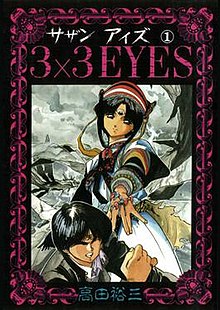
Cover of the first tankōbon volume, featuring Pai (top) and Yakumo Fujii (bottom)
|
|
| Genre | |
|---|---|
| Manga | |
| Written by | Yuzo Takada |
| Published by | Kodansha |
| English publisher |
|
| Magazine |
|
| English magazine |
Super Manga Blast
|
| Demographic | Seinen |
| Original run | December 1987 – October 2002 |
| Volumes | 40 |
| Original video animation | |
| Directed by |
|
| Produced by |
|
| Written by | Akinori Endō |
| Music by | Kaoru Wada |
| Studio | Toei Animation |
| Licensed by |
|
| Released | July 25, 1991 – March 19, 1992 |
| Runtime | 30 minutes (each) |
| Episodes | 4 |
| Original video animation | |
| Legend of the Divine Demon | |
| Directed by | Kazuhisa Takenōchi |
| Produced by |
|
| Written by |
|
| Music by | Kaoru Wada |
| Studio | Studio Junio |
| Licensed by |
|
| Released | July 25, 1995 – June 25, 1996 |
| Runtime | 46–51 minutes (each) |
| Episodes | 3 |
| Manga | |
| 3×3 Eyes: Genjū no Mori no Sōnansha | |
| Written by | Yuzo Takada |
| Published by | Kodansha |
| Magazine | e Young Magazine |
| Demographic | Seinen |
| Original run | December 26, 2014 – August 12, 2016 |
| Volumes | 4 |
| Manga | |
| 3×3 Eyes: Kiseki no Yami no Keiyakusha | |
| Written by | Yuzo Takada |
| Published by | Kodansha |
| Magazine |
|
| Demographic | Seinen |
| Original run | December 22, 2016 – present |
| Volumes | 7 |


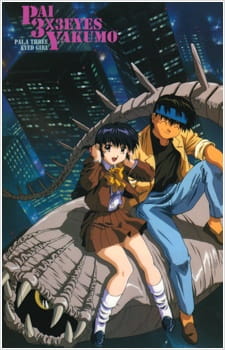
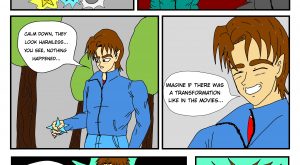
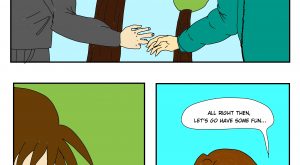
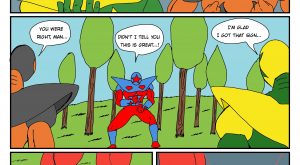
Binance
Thank you for your sharing. I am worried that I lack creative ideas. It is your article that makes me full of hope. Thank you. But, I have a question, can you help me? https://www.binance.com/ur/register?ref=B4EPR6J0